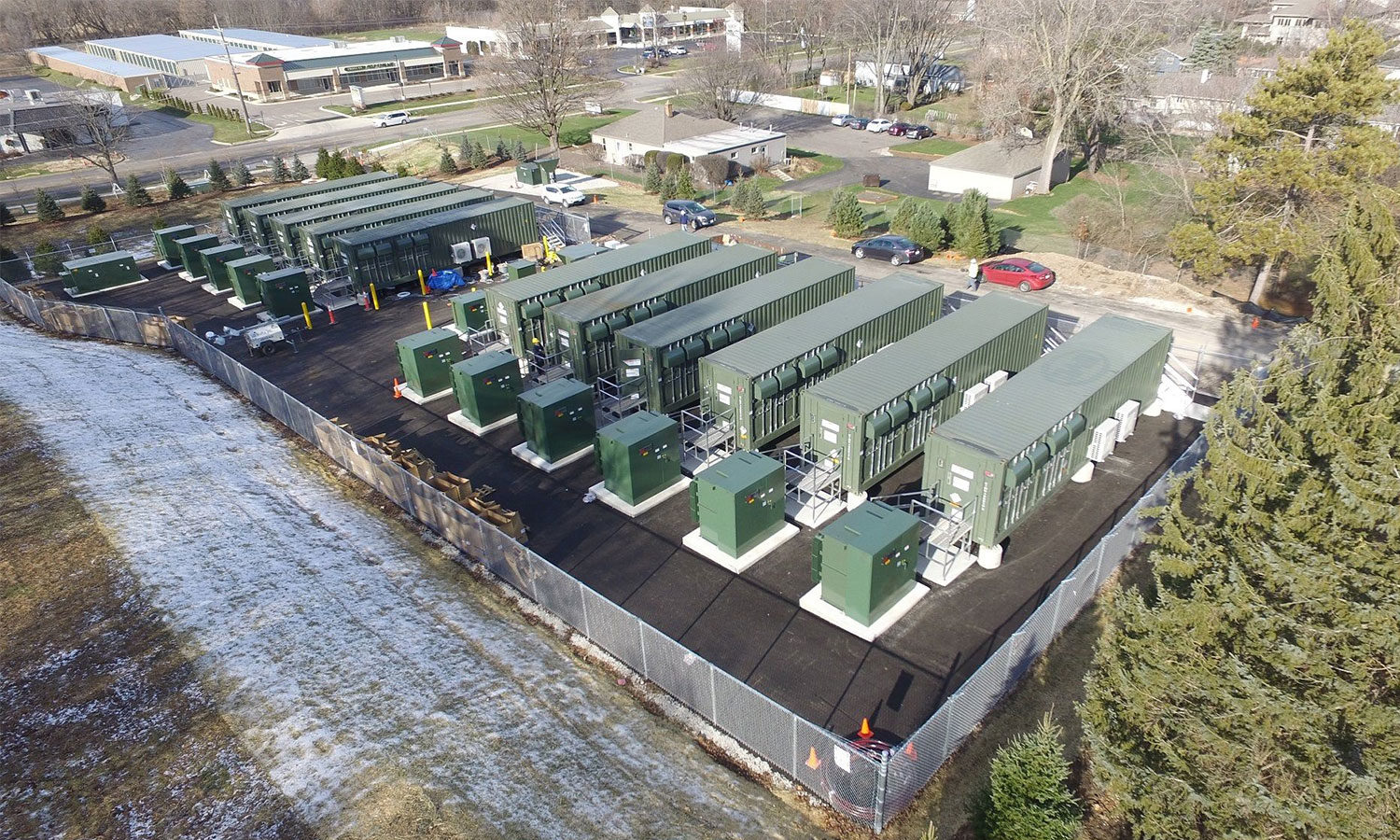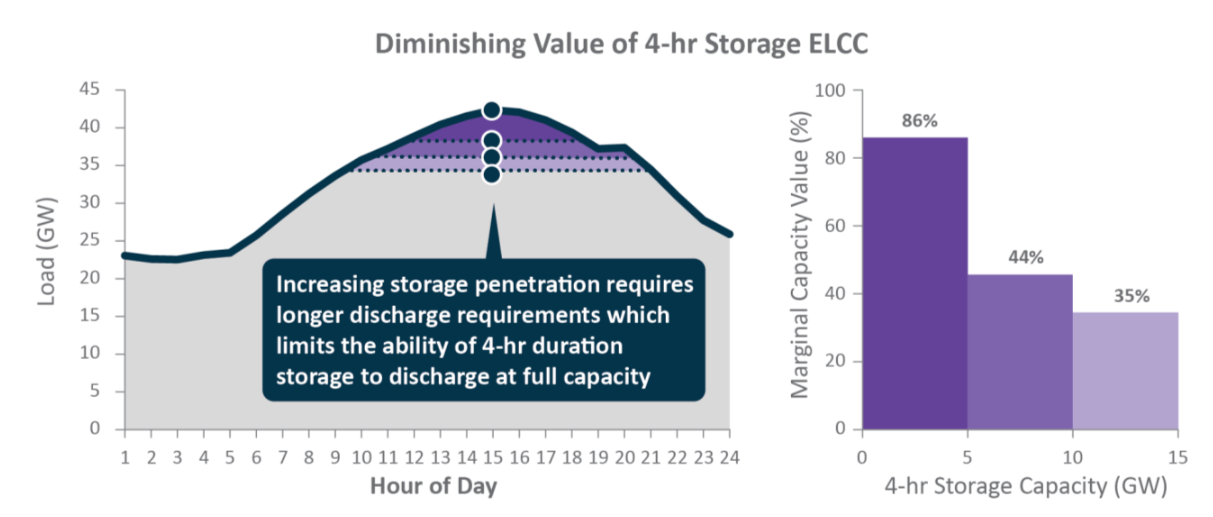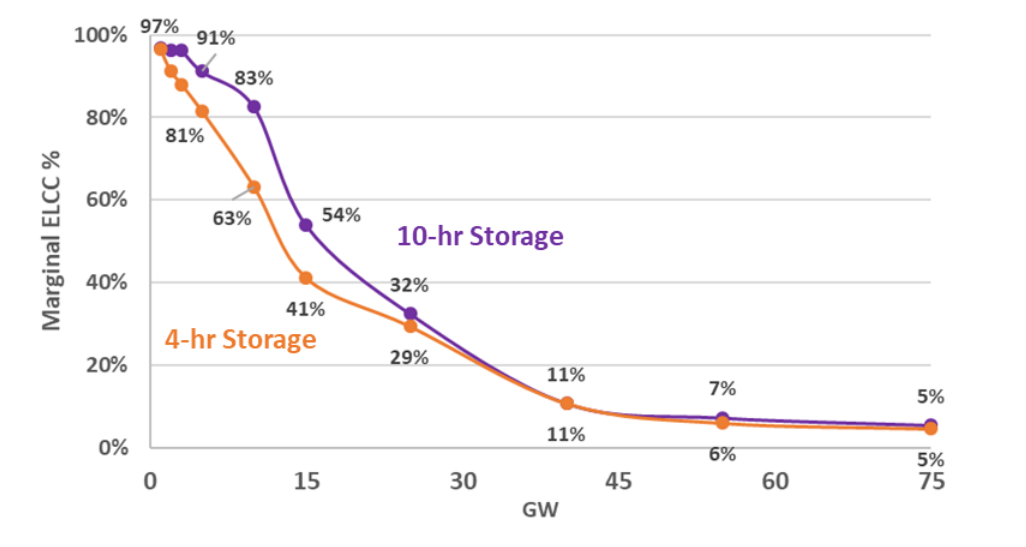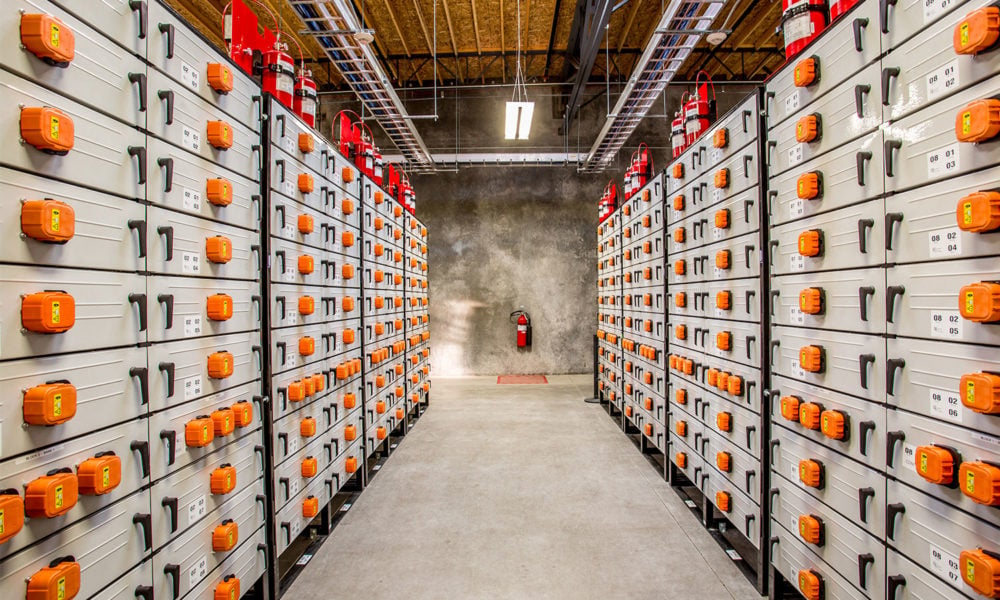It’s going to take a massive amount of energy storage to clean up the electric grid. That storage will soak up excess renewable energy when the sun is shining and the wind is blowing. Then the storage will discharge that energy during periods with low renewable energy production, which is when the grid will need that energy most.
By storing energy for later use, energy storage helps keep the grid reliable. But as we transition to a grid that runs primarily on clean energy and energy storage, grid operators must determine the extent to which energy storage ensures grid reliability. It’s important to get this exactly right because overestimating the grid reliability contributions of energy storage could jeopardize grid reliability, but on the other hand, underestimating these contributions could stifle investment in energy storage resources and slow the transition to a cleaner electric grid.
In a previous blog, I explained that many grid operators and utilities use a metric called Effective Load Carrying Capability (ELCC) to determine the reliability contribution of renewables. Let’s dive into the application of ELCC to energy storage, which is critical to understanding the promise and limitations of energy storage.
Energy storage and reliability: measurements matter
Measuring the grid reliability contribution, often referred to as the capacity contribution, of energy storage is not simple, but it’s critical. Grid operators across the country use resource adequacy programs to ensure there are enough electricity supplies to keep the lights on when electricity demand is at its highest. The capacity contribution of a resource determines how much that resource counts towards resource adequacy requirements, and in turn, how much money the resource owner gets paid.
Determining capacity contributions gets tricky with energy storage because resources like batteries and pumped hydropower are finite; they can only hold so much energy. Just like your cell phone or wireless speakers, when an energy storage resource discharges all its energy, it stops functioning, at least until it charges back up. Thus, one of the key factors determining the capacity contribution of energy storage is the duration, or the length of time that storage is able to discharge at its rated power capacity. For example, if a battery with a 100 MW rated power capacity is able to discharge at its full capacity (100 MW) for four consecutive hours, that battery has a 4-hour duration. (For a more thorough explanation of rated power capacity, energy capacity, and duration, see here.)
Currently most grid operators don’t actually calculate the capacity contribution of energy storage. They just have generic rules that determine storage’s capacity contribution based on its duration.
For instance, California’s resource adequacy program (which is run by the California Public Utilities Commission) has a rule that an energy storage resource must have at least a 4-hour duration in order for its capacity contribution to match its rated power capacity. On the other hand, PJM (the grid operator in much of the eastern United States) used to have a rule that energy storage must have at least a 10-hour duration for its capacity contribution to match its rated power capacity (but PJM is now transitioning to a new framework that relies on ELCC calculations).
These hard and fast rules based on energy storage duration are a crude way to quantify the capacity contribution of storage. Now that we are further along in our transition to a clean, modern grid, and as more and more energy storage comes online, grid operators need a more sophisticated methodology for calculating energy storage’s capacity contribution.
Enter ELCC.

The basics of ELCC and energy storage
In my previous blog post I explained that, at its core, ELCC is a measurement of a resource’s ability to produce energy when the grid is most likely to experience electricity shortfalls. That holds true whether evaluating renewables (like wind and solar) or energy storage. However, the application of ELCC to energy storage is different in one important way.
Unlike wind and solar, energy storage is dispatchable. That means that energy storage can discharge electricity to the grid at any time (as long as it’s charged). In general, this makes the ELCC of energy storage much higher than that of renewables since you can choose to dispatch energy storage during the times when the grid is most likely to experience electricity shortfalls.
However, energy storage is still limited by its duration. For example, if the grid faces six consecutive hours when load is very high and electricity shortfalls are possible, a 2-hour battery will still help ensure grid reliability, but since that battery cannot discharge at its rated power capacity for all six hours, its ELCC (and its capacity contribution) will only be a fraction of its rated power capacity.
With these basics in mind, there are a whole host of factors that affect the ELCC of energy storage, e.g. the amount of storage on the grid, the storage duration, the underlying portfolio of load/generating resources, other resources being brought online; the list goes on.
Let’s dig into each of these a little further. (I know, I know – we’re really getting into the weeds now. Hang in there! I never said cleaning up the grid would be easy…)
ELCC declines as more energy storage comes online
As is the case for renewables like wind and solar, the ELCC of energy storage declines the more you add to the grid. A great illustration of this phenomenon, shown below, comes from this E3 whitepaper on ELCC.
In essence, 4-hour storage does a great job of ensuring grid reliability during peak load hours, and for the first tranche of storage added to the grid, its ELCC is quite high (86% in this example). However, the addition of this storage spreads out the hours of the day when the grid is most likely to face electricity shortfalls, and at this point, additional 4-hour storage is not quite as effective at ensuring grid reliability. As a result, its ELCC begins to decline fairly rapidly.

Longer-duration storage does better, but its ELCC still declines
Now, you may be wondering, “does long-duration storage fare any better?” The answer is yes, but its ELCC eventually declines as well.
The chart below, from an E3 study examining reliability requirements on a deeply decarbonized California grid, shows that 10-hour storage has a higher ELCC value than 4-hour storage, particularly at lower energy storage penetrations. But no matter the duration, the ELCC of energy storage eventually declines when you add enough to the grid.

One important thing to note about the diminishing ELCC phenomenon is that, in the grand scheme of things, it doesn’t happen all that quickly. According to this study, the ELCC of energy storage starts to flatline at low levels only when California has added a truly massive amount of energy storage – approximately 40 gigawatts, which is more than ten times the amount on the grid today. That means that energy storage can go a long way in ensuring grid reliability, but there are limits.
And one more thing I should say – 10-hour storage is still a relatively short duration. If and when the technology comes along for week-long, month-long, or seasonal energy storage, the ELCC for those very-long-duration storage resources would likely be much higher and decline more slowly.
The rest of the grid affects the ELCC of energy storage
A whole host of external factors play a big role in determining the ELCC of energy storage. For example, the shape of electricity demand and the type/characteristics of other resources on the grid are both critical considerations.
For example, 4-hour energy storage will actually have different ELCC values in different parts of the country just because the grid is so different (in terms of both load profiles and generation portfolios) in different places. The graph below shows how, in the Pacific Northwest, the ELCC of 4-hour energy storage drops much more quickly than in other parts of the country. The creators of the graph explain that this precipitous decline is due to the hydro-rich electric grid in the Pacific Northwest – adding more 4-hour storage just doesn’t do much for grid reliability since there is so much existing energy storage built into the hydro-power system.

Renewable resources can boost the ELCC of storage
Interestingly, adding renewables to the grid can actually boost the ELCC of energy storage. In one study, the folks at NREL charted the relationship between solar penetration in California and the amount of 4-hour energy storage that would have an ELCC of 100% (see below).
This example is fascinating because, up until ~11% solar penetration, solar actually reduces the grid reliability value of energy storage. But at higher penetrations, solar provides a big boost. (This is a great example of “diversity benefits,” discussed in my previous blog.) The authors of the study explain this phenomenon by observing that, at lower penetrations, solar actually flattens the net load shape, but at higher penetrations, solar makes the net load shape “peakier,” which boosts the ELCC of shorter-duration energy storage.

Why does all this matter?
As we transition to a cleaner electric grid, energy storage is going to play a huge role in ensuring grid reliability. The challenge facing grid operators and regulators in California and across the country will be to determine exactly how much energy storage contributes to grid reliability. The stakes are high because getting it wrong could either jeopardize grid reliability or stifle investments in energy storage, thereby slowing the transition to a clean electric grid. To ensure energy storage investments continue at the pace required for rapid decarbonization, ELCC methodologies should be applied in a way that provides stability for investors, valuing the capacity contributions of energy storage in a consistent, predictable fashion.
At the same time, the application of ELCC to energy storage also tells us that there are limits to how far (short-duration) energy storage will be able to take us. To successfully transition to an electric grid that runs solely on clean electricity, energy storage will be tremendously helpful, but we’ll eventually need to invest in other types of resources to shore up grid reliability.
All in all, the application of ELCC is one way to quantify the grid reliability contributions of energy storage and fully understand its limitations. The transition to clean electricity won’t be successful unless we can spur clean energy investment that keep the lights on, and the thoughtful application of ELCC (to both renewables and energy storage) helps to do exactly that.

